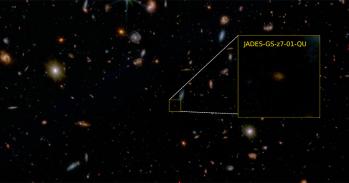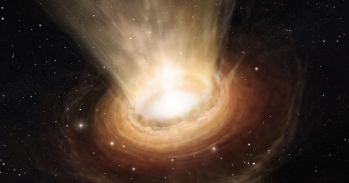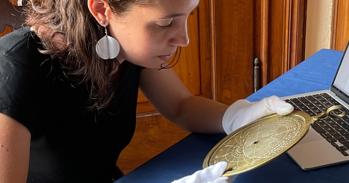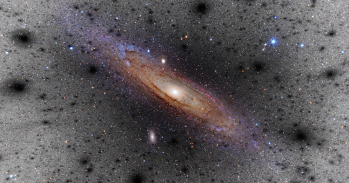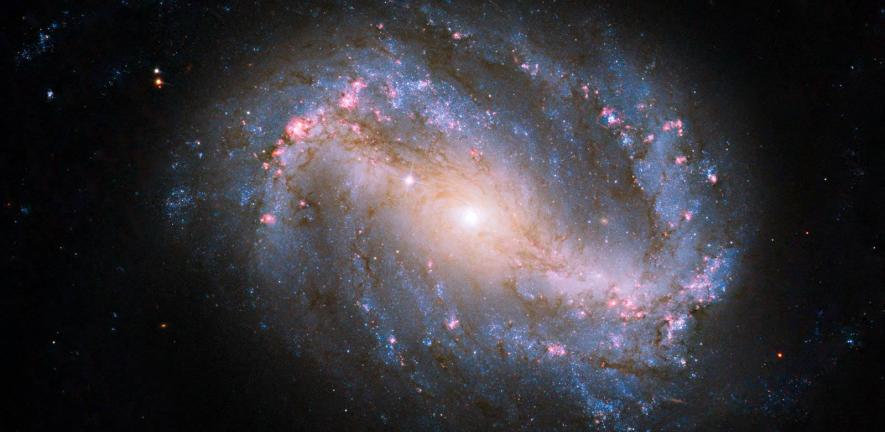
Once only science fiction, astronomers are now finding hundreds of planetary systems beyond our own. Given recent discoveries through space exploration, it is entirely feasible that we may soon discover the existence of extra-terrestrial life forms on other planets.
Once only science fiction, astronomers are now finding hundreds of planetary systems beyond our own. Given recent discoveries through space exploration, it is entirely feasible that we may soon discover the existence of extra-terrestrial life forms on other planets.
The question that humans have had for centuries – whether or not there are planets similar to our own around other stars – seems more and more to be best answered as ‘Yes!’
Jennifer Wiseman
The idea of extra-terrestrial life forms fascinates some and terrifies others. And even though our search for ET never quite panned out, we never stopped looking.
However, could this all be about to change following the discovery of hundreds of exoplanets (planets outside our Solar System), and thousands of candidate exoplanetary systems, some of which might be habitable for life.
Speaking about these momentous discoveries at the Cambridge Science Festival on March 16, NASA’s Dr Jennifer Wiseman will reveal how these exoplanets may provide evidence of biological activity, and discuss the profound invigoration of scientific and related religious and philosophical thought this might inspire if we find that life could thrive beyond Earth.
In a recent interview, Dr Wiseman said: “It’s a very exciting time for astronomy; we are finding a plethora of planets around other stars, including some that may be similar to Earth in size and temperature. The question that humans have had for centuries – whether or not there are planets similar to our own around other stars – seems more and more to be best answered as, ‘Yes!’”
It is expected that there is at least one planet, on average, orbiting around each star in our Milky Way galaxy, resulting in hundreds of billions of exoplanets, some fraction of which are the size of Earth at similar distances from their parent stars as Earth is to the Sun. These staggering numbers means there is a real possibility that we are on the verge of discovering our twin. If so, could this also mean the discovery of alien life forms similar to humans? And, what could this mean for humanity’s self-image if we were to discover that we are not unique or alone in the universe?
As Senior Project Scientist for NASA's Hubble Space Telescope and Director of the Dialogue on Science, Ethics and Religion for the American Association for the Advancement of Science, Dr Wiseman is uniquely placed to provide both insights into the latest developments in the search for inhabitable exoplanets, as well as reflections on philosophical and religious implications of finding life on another planet.
From identifying seismic wave activity and colour patterns on these other worlds, to the use of enormous telescopes that could potentially hunt for evidence of alien life by their atmospheres, astronomers are continuing to find new ways to look for that tantalising hint of life.
In January this year, astronomers announced the discovery of an Earth-like exoplanet candidate orbiting a star similar to our Sun in the ‘habitable zone’ – the area around a star within which it is theoretically possible for water to exist on a planet’s surface (and therefore also the possibility of supporting life). And in February, Harvard researchers identified three planets as 'objects of interest' - meaning they could also be potentially habitable.
Harvard astronomer and lead author Courtney Dressing, who presented the findings at the Harvard-Smithsonian Center for Astrophysics, said: “We thought we would have to search vast distances to find an Earth-like planet. Now we realise another Earth is probably in our own backyard, waiting to be spotted.”
In addition, the World Economic Forum Global Risks report for 2013 states that, "Given the pace of space exploration, it is increasingly conceivable that we may discover the existence of alien life or other planets that could support human life. ... In 10 years' time, we may have evidence not only that Earth is not unique, but also that life exists elsewhere in the universe."
The report continued, “The discovery of even simple life would fuel speculation about the existence of other intelligent beings and challenge many assumptions that underpin human philosophy and religion.”
Professor Meric Srokosz, Associate Director of The Faraday Institute for Science and Religion, Cambridge (the organisers of the event) said: “This is a unique opportunity to hear a genuine expert in her field, and to learn and think about one of the questions that continues to fascinate: is there life out there in the universe?”
Further space-related events at the 2013 Cambridge Science Festival include:
Frozen worlds – 10am – 4pm, 12 – 16, 19 – 23 March, Polar Museum, Lensfield Road, CB2 1ER
The Polar regions are a portal for exploring space. This exhibition presents some extraordinary technology developed to probe the most challenging places in the Universe. It examines how humans exist in harsh and otherwise inhospitable conditions such as the Poles and space. There will be activity boxes for people to use during their visit. Event: 10, Map: 51, Exhibition, Drop in, All ages.
A portal to space: frozen worlds panel discussion – 6pm – 7.30pm, 12 March
Polar Museum, Lensfield Road, CB2 1ER
The Polar regions offer impressive opportunities to study space, as planetary analogues and a way of exploring human endurance in difficult and isolated conditions. The Polar Museum presents a panel discussion by leading experts on current research in Antarctica. Event: 15, Map: 51, Talk, Ages 14+, Pre book*
Astronomy by microscope – 6pm – 7.30pm, 12 March
The Open University, 12 Hills Road, CB2 1PF
Traditionally, astronomers study stars and planets by telescope. But we can also learn about them byusing a microscope – through studying meteorites. From meteorites, we can learn about the processes and materials that shaped the Solar System and our planet. Tiny grains within meteorites have come from other stars, giving information about the stellar neighbourhood in which the Sun was born. In her lecture, Professor Monica Grady will describe how the microscope is another tool that can be employed to trace stellar and planetary processes. Event: 16, Map: 63, Talk, Ages 16+, Pre book tel: 01223 584647 or email: R06-Outreach@open.ac.uk
Think you can handle outer space? – 7pm – 8pm, 15 March
Institute of Astronomy, Sackler Lecture Theatre, Hoyle Building, Madingley Road, CB3 0HA
Discover the extremes of the Universe! Join us as we find out what it’s like on other planets and in outer space! See what happens to everyday things as they go from the burning hot to the freezing cold and up to extreme pressures. Get ready for some loud bangs and mess! An explosive talk about space. Event: 35, Map: 34, Talk, Ages 8+
Expedition to Mars – 7.30pm – 10.15pm, 16 March
The Polar Museum, Lensfield Road, CB2 1ER
Prepare yourself for space exploration at the Poles! During one evening you will ‘train’for your space expedition at the Poles and go on to conquer space! A film screening of the 1950s classic space adventure ‘Conquest of Space’, with hands on activities and an introductory talk. Event: 87, Map: 51, Hands on, Talk/Film, Ages 16+, Pre book*
When we walked on the moon – 6pm – 7pm, 19 March
Mill Lane Lecture Room 3, Mill Lane, CB2 1RW
Sponsored by Cambridge University Press
The moon is still the only body beyond Earth on which humans have set foot. Ian Ridpath introduces the main features of the moon from its ancient plains of solidified lava to craters the size of cities blasted out by meteorite impacts. He traces the lunar exploration from the first space probes to the Apollo landings and describes why astronomers now think that the moon was born when another body hit the Earth billions of years ago. Event: 108, Map: 44, Talk, Ages 14+
Open afternoon at the Institute of Astronomy – 2.30pm – 6.30pm, 23 March
Institute of Astronomy, Madingley Road, CB3 0HA
The Institute of Astronomy opens its doors for the annual open afternoon. We will have talks, displays,demonstrations and hands on activities for everyone to learn more about Astronomy, and the kind of research we do. There will also be an exhibition from the historical archives of the Library. Event: 133, Map: 34, Hands on, Drop in, Ages 8+
Public observing at the Institute of Astronomy – 7pm – 9pm, 23 March
Institute of Astronomy, Madingley Road, CB3 0HA
Stargazing on the Observatory lawns using both modern and historical telescopes if (and only if!) the weather is clear. If it is cloudy, the event will not go ahead. Event: 134, Map: 34, Demonstration, Drop in, Ages 8+
This work is licensed under a Creative Commons Licence. If you use this content on your site please link back to this page.


